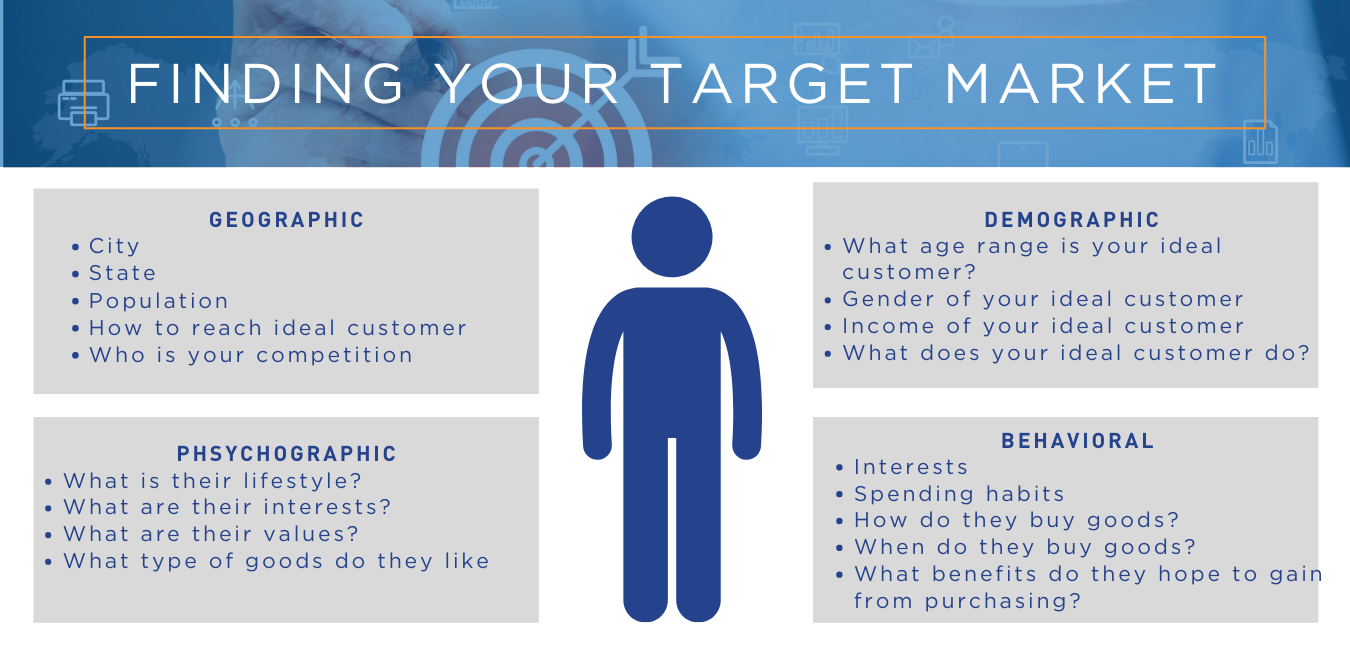Establishing Your Target Market
Establishing Your Target Market
The target market of your business is your ideal customer based on the product or services you are offering. Depending on the business, there may be more than one target market but it is important to establish your primary target market.
For school-based enterprises (SBEs) like Spirit Box, your target market may include students, teachers, and parents. Understanding your customers' needs and behaviors helps you stock the right products, market effectively, and maximize sales.
You can determine your ideal customer by identifying what kind of products you sell and what kind of person buys these products.
Geographical (where they are)
Where is your ideal customer located? With the rapid growth of online businesses your customer doesn’t have to be in your own city. When establishing your target market, identify where your ideal customer is located, how you want to reach them, and who your primary competitors are.
Example:
If your Spirit Box vending machine is near the gym, your target market might be athletes, parents, and students looking for smart snacks, energy drinks, or spirit wear for a game. If it's in the cafeteria, students and staff may look for snacks or drinks to complement their lunch.
Psychographic (who they are)
The psychographic traits of your target market are the personal traits that they have such as their lifestyle, values, and the goods they like to purchase. This helps you identify what kind of inventory your business is going to sell.
Example:
In your SBE the psychographic traits you might identify are:
An athlete
Likes school spirit wear
Hungry after practice
Needs deodorant after gym
Demographic (what type of person they are)
These are the outward characteristics of your target market: their age, gender, income, etc.
Example:
In your SBE, your demographic might be identified as:
14-18 years old
Student
Athlete
Has a part time job after school with extra money to spend at your SBE
Behavioral Traits (how they behave/spend)
These are the patterns that impact your ideal customer’s spending. If you have a Spirit Box and you sell school supplies, spirit wear, and snacks your ideal customer likes the convenience of an automated retailer because they may not have a car to purchase these items elsewhere.
Example:
In your SBE, the behaviors your ideal customer exhibit are:
Customer buys a daily snack or drink
Customer buys a spirit wear shirt every football season
Customer purchases needed school supplies because of the convenience of not having to go to the store
Creating a Customer Avatar
A great exercise is to create a customer avatar. This is your ideal customer who you want to purchase from you. Keep in mind that you may not be your ideal customer, so it’s important to create a customer avatar of someone who wants what you are selling, you solve a problem of theirs, and they like what you offer them. Once you have this person identified, you focus your marketing efforts towards them.
Get started
Your target market market may fluctuate as your business grows but establishing that starting point will help you have direction in your business. Your target market will help you decide how you market your products, what products to sell, and how you talk to your customers. Establishing your target market gives you a roadmap of what direction to go.
Now you know how, so let’s go and do! Download our worksheet on establishing your target market to start putting your thoughts into action.

